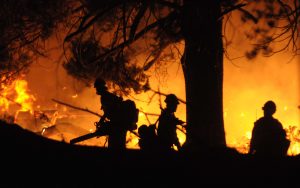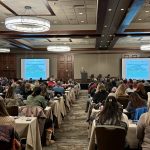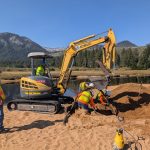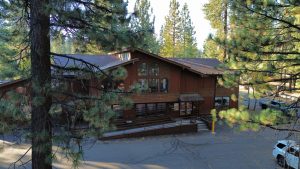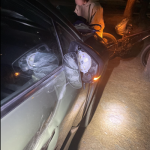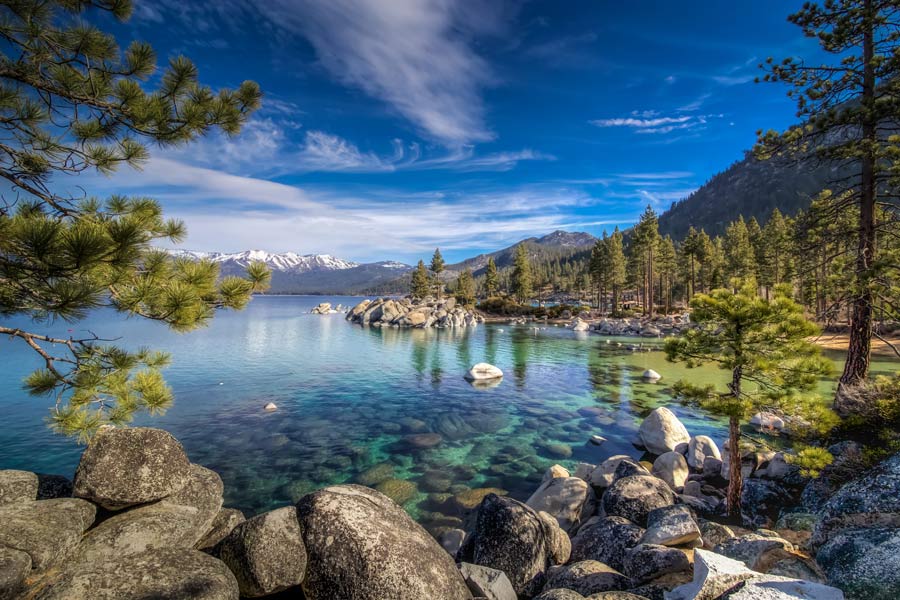Messages in the trees: looking for ‘arborglyphs’ around Lake Tahoe
Capturing historic carvings helps researchers preserve a unique cultural resource

Provided / Teresa Wriston
Wandering through the pine and aspen forests of the 1800s could be a difficult task for a Basque shepherd. Brought to America by the promise of potential wealth, Basque people had developed a reputation for handling sheep in the West. But navigating the new landscape with a whole flock in tow was often disorienting. To mark their paths through the woods, many shepherds would carve their names, various images, or directions into the tree bark—leaving what felt like a permanent trace of themselves and what they cared about.
Hundreds of years later, many of the trees that hold these precious pieces are either dying, hard to access, or hard to find. Now, researchers and parks are encouraging people to document them through photographs to preserve the unique cultural resource.
An arborglyph, also called a dendroglyph or silvaglyph, is a term used to refer to any carving made in the bark of living trees. Even a simple heart encompassing two lovers’ initials is considered an arborglyph (and frequently referred to as a “love carving.”)
In the West, arborglyphs have been found throughout northern California, Nevada, and Oregon, often chronicling the unique period of history of both Basque and Irish American shepherds from the mid-1800s to the 1900s. Here in the Basin, the carvings are typically found on quaking aspens, where the carvings have turned black against the pale bark.
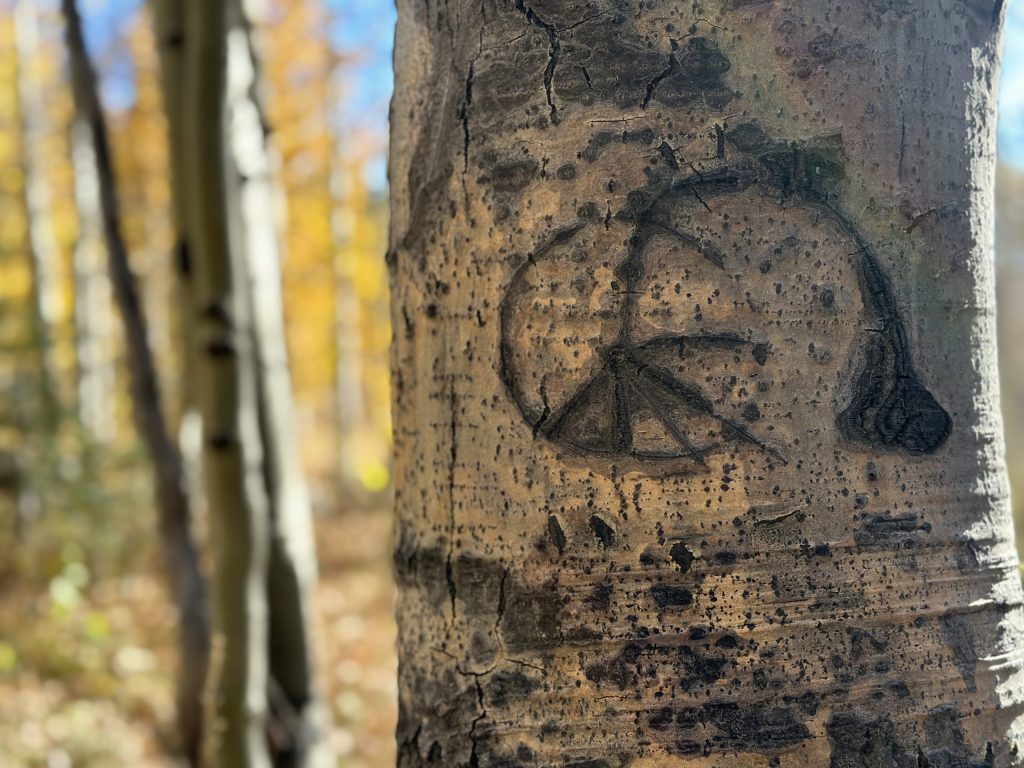
“Some arborglyphs have a purpose, while others are artistic in nature,” said Arthur Krupicz, historic preservation specialist at the Nevada State Parks. “Here, many of them have letters and dates on them. They’re done with a light hand rather than being carved with a knife. And they may reference specific topics, subjects, names, or events that can help date them, such as references to the Basque separatist movement.”
Teresa Wriston, geoarchaeologist and professor at the Desert Research Institute, has a personal connection with these carvings. Her husband is of Basque descent, and she grew up on a sheep ranch. In collaboration with the state parks, Wriston collects location data and photographs of arborglyphs around the region.
What’s carved here typically lives in the realm of names and Basque flags, though other arborglyphs could depict people or favorite items. “Some of them can even be a little risqué,” said Wriston.
One unique piece was unfortunately lost to storm damage and particularly eager beavers—it depicted a man overlooking a pond while wearing a beret. Wriston lamented that she was unable to take pictures of it before the tree had to be removed for safety reasons.
“Knowing how much we’ve already lost in the last 20 years is really the most disheartening part,” mused Wriston. But with her collaboration with the parks and other agencies, she’s finally showing the public how to document the carvings.
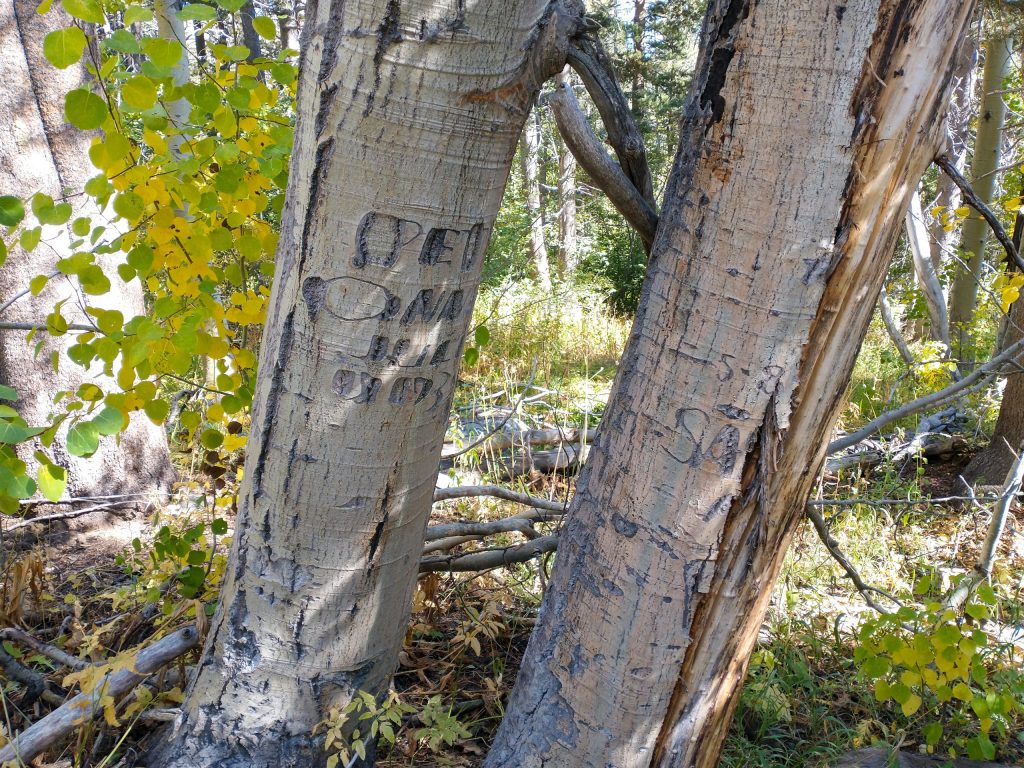
Wriston released a paper that showed that with good enough lighting and conditions, even phone pictures of arborglyphs are a major help to researchers and historic preservation efforts. “Getting different angles and recording the location can really assist with this kind of work,” she said. “It is citizen science and their help in collecting data is immensely useful.”
Though there’s currently no single database to submit the photos, Wriston is working with the Arborglyph Collective to make a place accessible to the public. Krupicz encouraged the public to send their data to state parks archaeologists as well, though they can be found all around the area, not just in the parks.
“We really want to preserve these photos and even the actual carvings themselves so that they can actually be seen,” said Krupicz. “We don’t want people to disturb or destroy the sites where they are, but they’re such a fascinating and unique part of history here.”
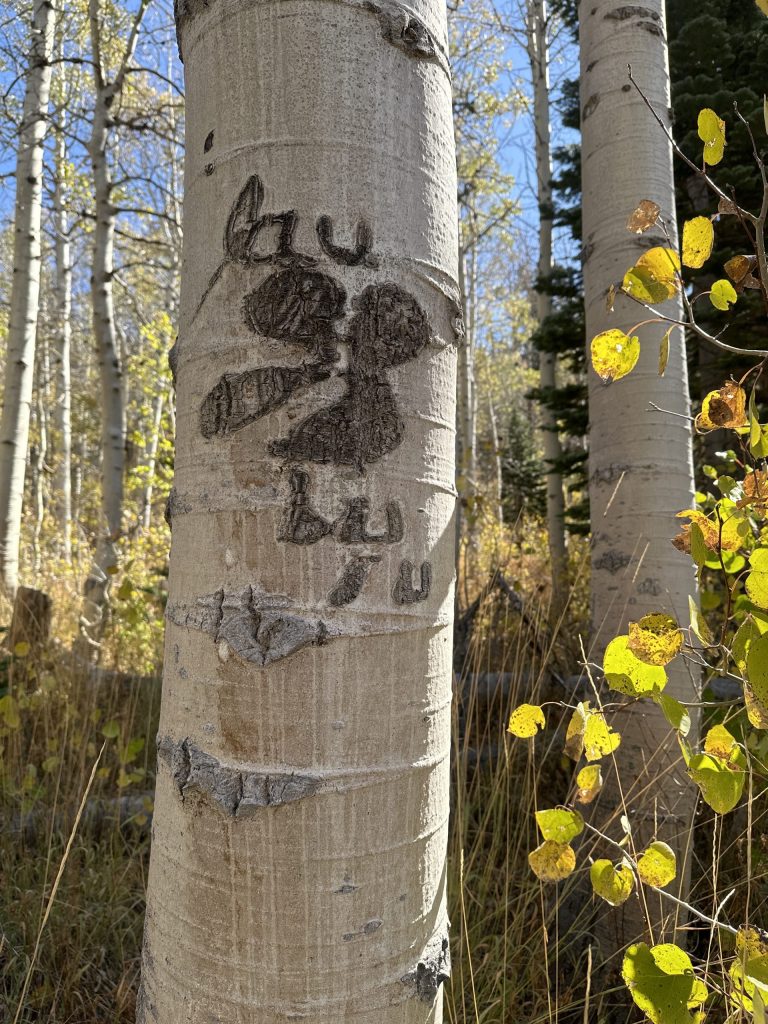
For descendants of those who lived in the area, being able to connect back with their history is a major opportunity. “It feels like seeing a little piece of home in the symbology,” said Wriston. “We’re so connected now, we forget how isolated these people could be.”
“There’s a story in these carvings. These are a reminder of how we’re all immigrants unless we’re Native American, a reminder of how we’ve shaped and managed the land here,” said Wriston. “With increasing damage and age to these trees, it’s also a reminder of how many artifacts and features of history have probably disappeared because they weren’t resilient enough to weather the passage of time.”
So, when you’re out in the woods hiking, keep your eyes out for these traces of the people who walked this terrain in years past—and photograph them to preserve their story for years to come.
Editor’s note: This article originally appeared in the Summer 2025 edition of Tahoe Magazine.
Eli Ramos is a reporter for Tahoe Daily Tribune. They are part of the 2024–26 cohort of California Local News Fellows through UC Berkeley.

Support Local Journalism

Support Local Journalism
Readers around the Lake Tahoe Basin and beyond make the Tahoe Tribune's work possible. Your financial contribution supports our efforts to deliver quality, locally relevant journalism.
Now more than ever, your support is critical to help us keep our community informed about the evolving coronavirus pandemic and the impact it is having locally. Every contribution, however large or small, will make a difference.
Your donation will help us continue to cover COVID-19 and our other vital local news.

